RIP George Romero: How the Horror Auteur Gave Rise to Underdog Cinema
George Romero, who recently died at 77, helped usher in the DIY filmmaking age.
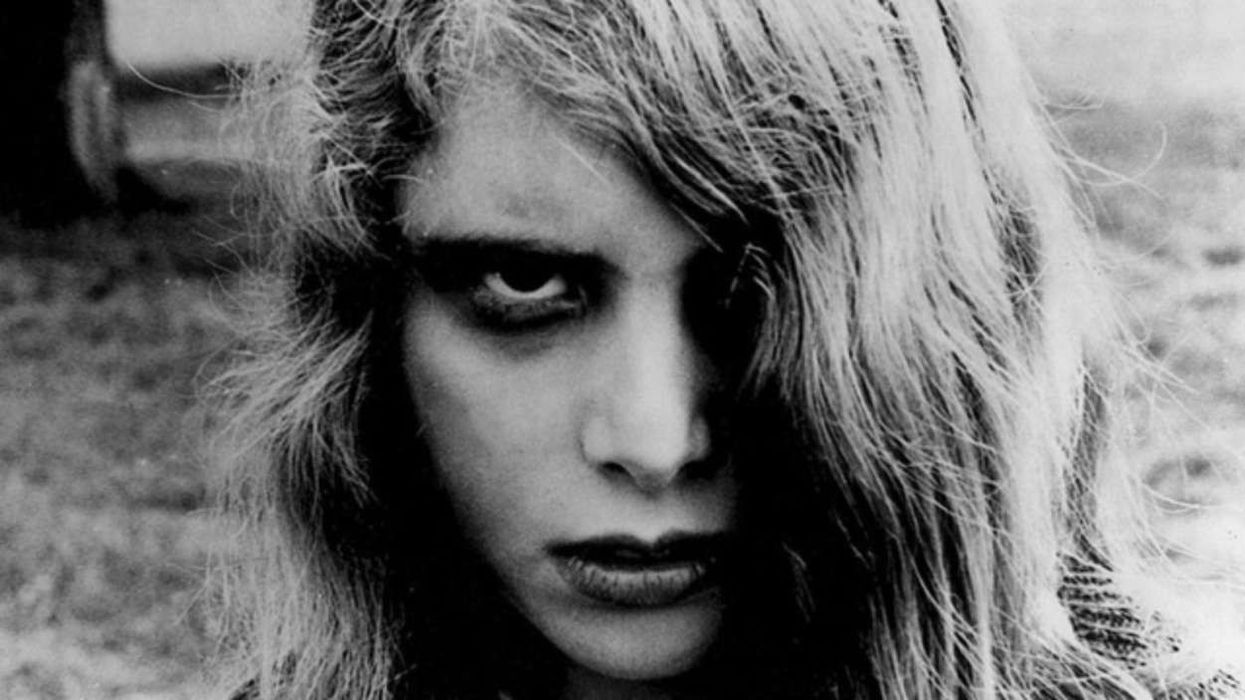
Stephen King called him his favorite collaborator. He invented zombies as we know them. He brought comic book style to the screen for what felt like the first time after the original Batman. He fought Nixon, Reagan, and both Bushes with his images time and again. He created the American midnight movie and never sold out or compromised his vision. He adopted half a dozen generic forms and always made them his own. His name was George A. Romero, and his legacy will live on.
Throughout his life, Romero never once forgot the little guy. He put his focus on the struggling family, the forgotten wife, the lower class scrapper, the handicapped man, the downtrodden and tired, the one black face in a squad of white cops. He battled producers all his life for money, and he always won.
Romero was born in The Bronx and spent most of his childhood riding the subway to Manhattan to rent film reels he'd project on his apartment walls. His favorite was Michael Powell and Emeric Pressburger's The Tales of Hoffmann, an opera about an inventor who loses the women he loves thrice over. (Frequently, Romero would go to rent Hoffmann and find it had been taken out by a kid from Queens named Marty.) Hoffmann's images—the raw beauty of Powell & Pressburger's cinema—would stay with Romero forever.
Romero's independent model would become the basis for some of the biggest blockbuster success of the 21st century.
"It was the filmmaking, the fantasy, the fact that it was a fantasy and it had a few frightening, sort of bizarre things in it—it was everything," Romero would later say, in his plainspoken, slightly folksy way, about the film. "It gave me an early appreciation for the power of visual media—the fact that you could experiment with it. He was doing all his tricks in-camera, and they were sort of obvious. That made me feel, 'Gee, maybe I could figure this medium out.' It was transparent, but it worked."
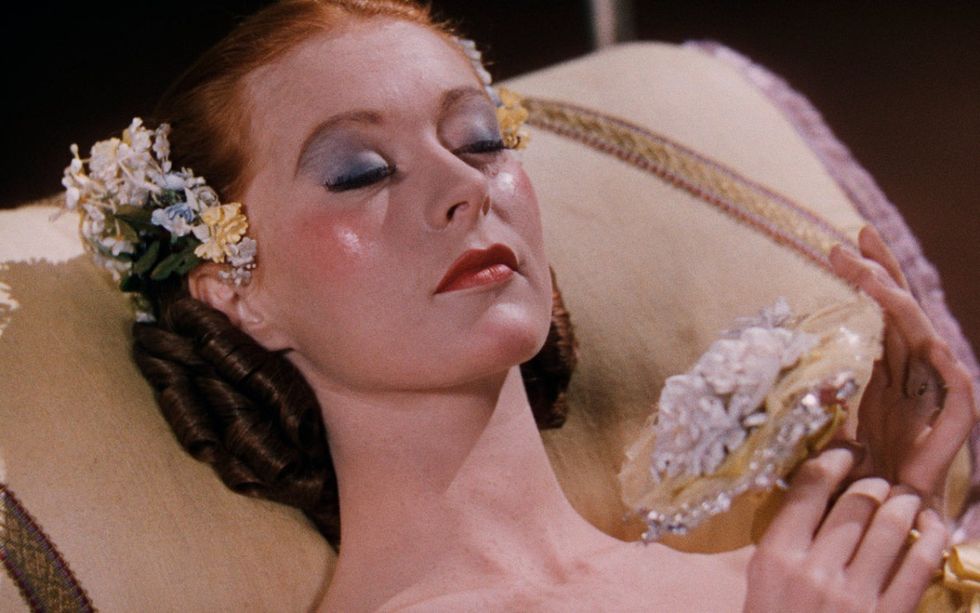
Romero went to Carnegie Mellon in Pittsburgh and stayed there after he graduated, making shorts and TV documentaries and eventually working for a commercial production company called Latent Image. In his non-fiction films, Romero would work with a pre-infamy OJ Simpson and Mr. Rogers. It's a bizarrely fitting juxtaposition: Romero knew America's highs and lows. He knew what it feared and what it loved. He also knew how quickly one could become the other.
It was in January 1967 that the young director's fortunes changed. Romero and fellow Latent Image employees John Russo and Rudy Ricci were drinking beer and eating lunch, bemoaning the lack of creative opportunities. They complained that there was no way to break into the film industry in Pittsburgh; thus, they were stuck making commercials. Between them, they'd had moderate successes—most notably, a well-made Fantastic Voyage parody called The Calgon Story, a detergent commercial—but no one at Latent was living their best life. So the three men hatched a DIY plan: they would make a film that could play at drive-ins in order to garner attention from Hollywood. This independent model would become the basis for some of the biggest blockbuster success of the 21st century—make an indie that plays Sundance, get plucked by the majors like a college athlete—and Romero was one of the first indie filmmakers to pose a threat to Hollywood, formally as well as financially.
Romero paid careful attention to segments of the population usually forgotten by mainstream movies.
Romero and his colleagues started Image Ten, a little production house with a few thousand dollars to its name. After a few months of brainstorming, they started production on their first feature. Everyone threw an idea in the pot; Romero, who'd been elected director by the small crew, took them all and added a hefty dose of Richard Matheson's I Am Legend (about the last man on earth after a vampire plague has claimed everyone). The movie was made for $114,000 and took six months to film. When completed, Romero threw the film reels in the back of a truck and took it to New York to see if anyone would screen it.
The result would be called Night of the Living Dead when the Walter Reade Organization agreed to show it uncensored in 1968. It had its premiere in Pittsburgh before playing nationally as a Saturday matinee. Audiences were not ready for it.
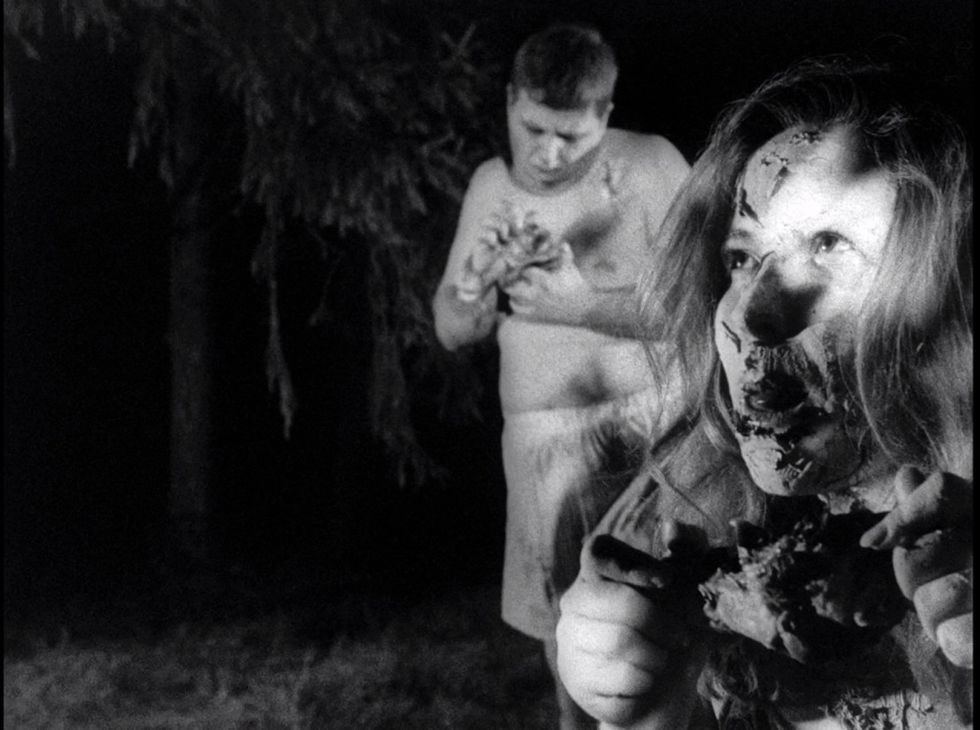
There are a dozen reasons Night of the Living Dead ignited in movie houses in '68, a time of political revolution in the midst of the Vietnam War. Although film grammar had been altered by global new waves, there was something shockingly modern about the immediacy of Night's horrors. In fact, Night of the Living Dead played like a reaction to a country's acceptance of violence; with war on TV screens, it's a wonder violence in movies had never felt this real. When the zombies tear into the characters and eat them for the first time, there's a grim patience to the way Romero shoots the very-real looking effects. The zombies will wait as long as they need to get what they want—us—and they won't leave a scrap of meat unused. Throughout the film, men are shot, a little girl stabs her mother to death and eats her, and to cap it off, our innocent hero is shot to death by a posse in an ending that, to this day, provokes a visceral upset.
The film's heroes are a woman suffering from PTSD and a handsome, articulate black man beset by (admittedly implicit) racists and ghouls. The character of Ben was written as a good ol' boy truck driver, but in the hands of actor Duane Jones, an important figure in independent black cinema, Bill became a post-Sidney Poitier marvel of swift charisma. That was because Romero trusted Jones to make the character his own, allowing him to perform on-camera rewrites. At the time, the class and racial resentment in the movie went unremarked upon, but it's buried in there, waiting to rise like one of the undead.
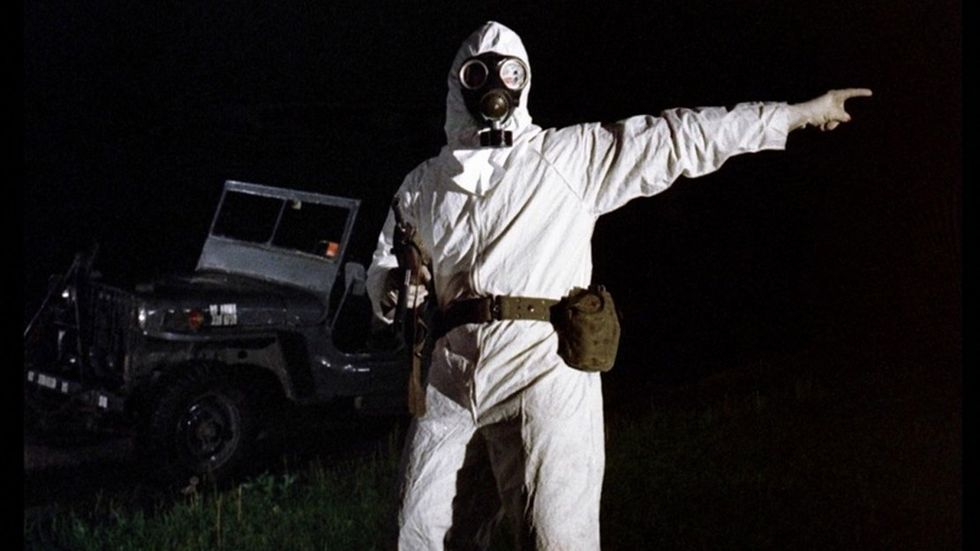
Romero branched out after Night with a romantic comedy called There's Always Vanilla, about a veteran drifter who busks and whores to stay alive—something Romero saw a lot of on the streets of Pittsburgh, where the film is set. Romero's hero works for an advertising firm, adding a semi-autobiographical layer to the movie. The director followed it up with Season of the Witch, which he shot, edited, and directed on a micro-budget. Originally called Jack's Wife, it's about a Pittsburgh housewife who finds herself after learning the secrets of witchcraft. She begins a journey of self-discovery without her husband, something very few genre filmmakers at the time had considered: the modern suburban feminine identity.
The Crazies is Vietnam in Middle America, and it's absolutely chilling.
Next, Romero directed The Crazies. It was his third commercial misfire in a row, but there's something undeniably potent in its dirty barrage of horrifying images. In the film, a town's water supply is dosed with a toxin that turns everyone into murderous deviants, trying to screw or kill everything in sight, turning father against daughter and neighbor against neighbor. On a thematic level, the film addresses a government which accidentally erases the standards of decency it pretends to uphold while horribly violent conflicts erupt abroad. White-clad agents of destruction are set loose to contain "the crazies," shooting and burning everything in sight. It's Vietnam in Middle America, and it's absolutely chilling.
Next came Martin, a beautiful, sensitive study of an outsider who takes solace in vampire lore to assuage his anxiety with his working-class family. (Many of Romero's fans could relate to this.) It's one of the great vampire films of all time and features unforgettable, empathetic footage of dying Pittsburgh streets.
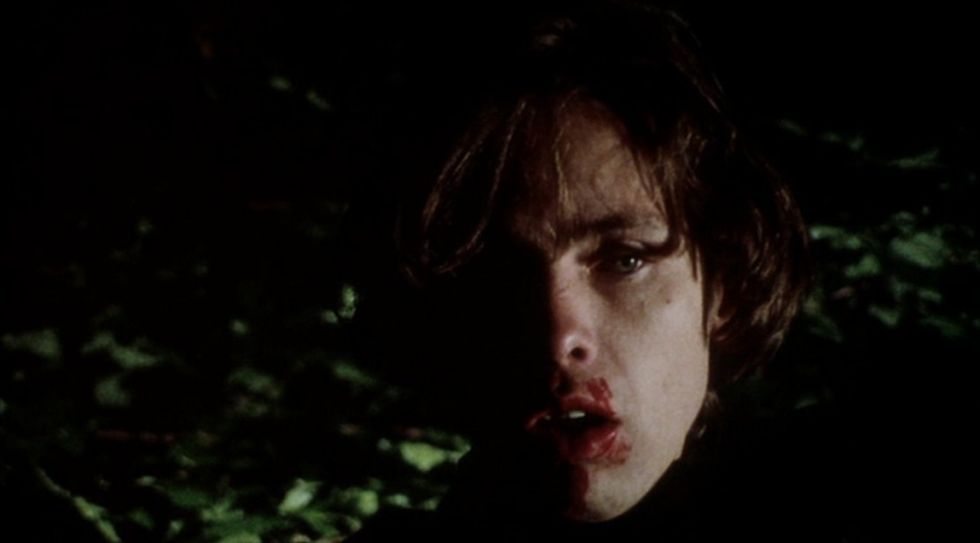
Shortly after Martin, Romero visited a friends' new business—an indoor shopping mall, which was a groundbreaking commercial venture at the time. Romero watched customers flock from one store to the next, eating, window shopping, and getting their hair cut without ever stepping foot outside. Gears began turning in his head and out came the sequel to his barrier-shattering first hit.
Dawn of the Dead is one of the enduring capitalist critiques in American cinema.
Dawn of the Dead is one of the enduring capitalist critiques in American cinema. It hits with documentary-like force—first, while a TV station lies to viewers about shelter to keep their viewer numbers high; then, when racist police violently remove black and Hispanic residents from their building to get at the zombies they're hiding in the basement. The film is a verite-style look at a crumbling ecosystem, from the gun-nuts in the sticks taking out their own version of justice to the motorcycle gangs (among them former combat photographer-turned-make-up artist Tom Savini) flourishing in the post-apocalyptic world. But most memorably, Dawn of the Dead is a critique of materialism. The main cast hides out in the big mall thinking their access to its bountiful riches will keep them safe and happy, but cabin fever sets in and their old problems rise from the dead. The film also contains one of the greatest looks at a crumbling marriage, subtly showing how resentment compounds through small actions that morph into pervasive patterns of behavior.
Romero's subsequent work was always interesting and soulful, but his hits were few and far between. Both Day of the Dead, about a Reagan-era military force pretending it still has control while cowering underground during the zombie apocalypse, and Land of the Dead, about a crew of zombie-killing mercenaries trying to extort a Dick Cheney-like figure in charge of a safe block of housing for the rich, were successful. But they weren't his best work from that time period.
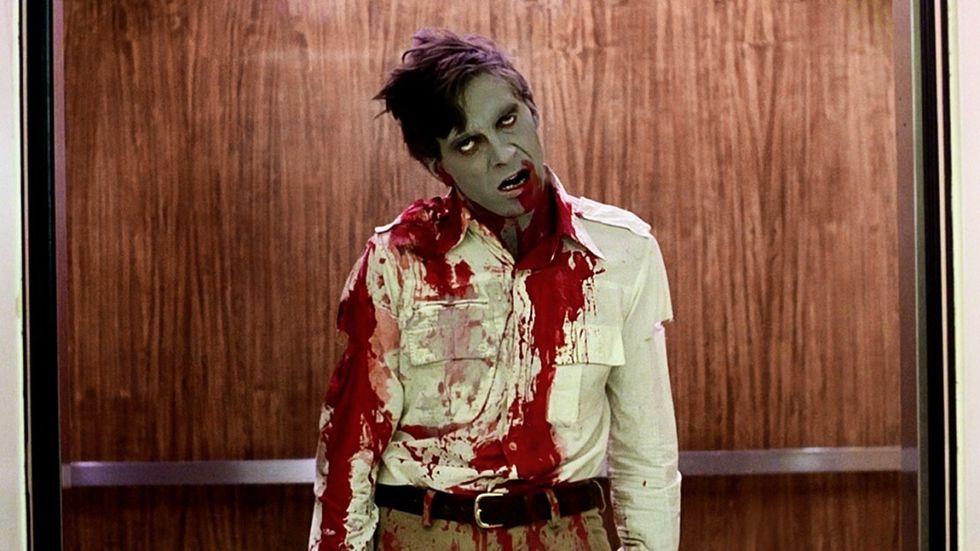
That would be Knightriders, Romero's ode to life on a film set, though he chose a perfectly quirky stand-in for his film crew: a group of Renaissance festival larpers who ride motorcycles instead of horses.
After that, Romero made Creepshow, one of the best-shot horror films ever made. Written with Stephen King (who stars in one of five vignettes) and based on EC Comics horror stories, Romero successfully recreates the look and feel of the old pulp comics with evocative, sharp, and eerie lighting.
His trio of battered male character studies—Monkey Shines, The Dark Half, and Bruiser—are wonderfully shot and carefully written, exposing the American male ego in various states of decay. The stand-out is Monkey Shines, which follows a quadriplegic who grows so close to his helper monkey that it begins murdering on his behalf. Star Jason Beghe's literal helplessness during nightmarish scenes of chaos and murder is deeply affecting. Per usual, Romero paid careful attention to segments of the population usually forgotten by mainstream movies.
Romero capped off his career with two zombie movies which have an air of finality about them. He dipped his toe in the found-footage craze with Diary of the Dead, a fun but despair-filled meta-movie about a film crew on the run during an outbreak of the undead; the film proved he still had the energy of a young man behind the camera. And lastly, there was Survival of the Dead, which posits that masculine pride and ownership continue to compound even after life ends, like hair or debt—or, you could say, like Romero himself. Plans for Romero-produced Road of the Dead, a kind of answer to Mad Max: Fury Road, were just announced last month.

 Richard Gere and Uma Thurman in 'Oh, Canada' via Kino Lorber
Richard Gere and Uma Thurman in 'Oh, Canada' via Kino Lorber  Uma Thurman in 'Oh, Canada'via Kino Lorber
Uma Thurman in 'Oh, Canada'via Kino Lorber 









